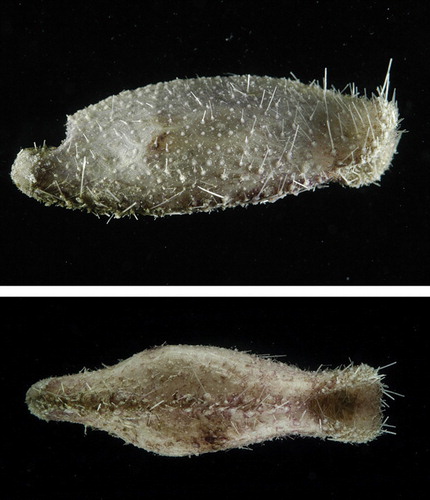Published in collaboration with the University of Bergen and the Institute of Marine Research, Norway, and the Marine Biological Laboratory, University of Copenhagen, Denmark
As Marine Biology Research enters its fourth year as a forum for communicating high-quality research findings, we are proud to present our first thematic issue devoted to the very timely research topic of biodiversity in the deep sea. Before providing a short introduction to this issue, the Editors would like to announce a few changes that have taken place recently on our editorial board. Three new subject editors have joined us: Tomas Cedhagen in marine benthos ecology and diversity, David Montagne in microplankton, and Ronald Thom in coastal monitoring and management. We are also pleased to announce that Margaret Mary McBride has joined Penny Lee Liebig as editorial coordinator in the editorial office at the Institute of Marine Research – welcome to all! Two subject editors have left us recently, Rutger Rosenberg and Diane Stoecker – many thanks to both for serving Marine Biology Research during three very productive years!
This thematic issue is result of a large collaborative effort as part of MAR-ECO – an ocean exploration initiative within the global Census of Marine Life (CoML). MAR-ECO investigates ‘Patterns and processes of the ecosystems of the northern Mid-Atlantic’ (Bergstad & Godø Citation2003). This multi-national project – co-ordinated at the Institute of Marine Research in Norway by Odd Aksel Bergstad and Tone Falkenhaug – has the goal to ‘describe and understand the patterns of distribution, abundance and trophic relationships of the organisms inhabiting the mid-oceanic North Atlantic, and identify and model ecological processes that cause variability in these patterns’. Beyond this formal statement of purpose lies a passionate interest to learn more about fauna living in the area of mid-ocean ridges.
Mid-ocean ridges are undersea mountain chains that form the largest continuous topographic feature on Earth; a global network more than 75,000 km long. Characterized by high relief, rough topography, and remoteness from land, these ridges are very difficult to access even with modern oceanographic technologies. Few previous investigations have been dedicated to the study of animal communities inhabiting these characteristic areas of the world ocean.
One of MAR-ECO's major components has been a large international expedition – conducted onboard the Norwegian research vessel G.O. Sars during June and July 2004 – that sampled the water column and seafloor associated with the Mid-Atlantic Ridge in target areas between Iceland and the Azores. It yielded voluminous samples and data in various fields of oceanography (full cruise report can be found at www.mar-eco.no/sci). This thematic issue of Marine Biology Research is dedicated to studies of the benthos resulting from this MAR-ECO expedition.
Some taxa found in the collected material appear new to science, some appear new to a region, others required additional taxonomic remarks, revisions, or re-description. As a result, a series of research reports were prepared, nine of which were selected to form a thematic issue on benthos taxonomy – from descriptions of new genera and species to annotated species lists offering systematic and biogeographic remarks. The diverse fauna treated here consists of glass sponges (Hexactinellida), corals (Anthozoa), peanut and echiuran worms (Sipuncula and Echiura), sea lice (parasitic Isopoda), sea stars (Asteroidea), irregular sea urchins (Echinoidea, family Pourtalesiidae), sea cucumbers (Holothuroidea), brittle stars (Ophiuroidea) and lampshells (Brachiopoda). Taxonomic experts involved in this project were from Russia, Ukraine, Germany, and the USA. Overall, 15 new species and one new genus (in the echinoid family Pourtalesiidae) have been described – representing about 10% of the total number of benthic species sampled during the MAR-ECO expedition.
This issue will be a significant contribution to knowledge of benthic fauna inhabiting the northern Mid-Atlantic Ridge and ridge-associated deep-sea biota in general. We thank, in particular, the subject editors Christoffer Schander, Ole Tendal, and Egil Karlsbakk for their time and the scientific scrutiny they invested in the overall manuscript review process. We also thank the many referees for their excellent contribution allowing us to publish this research at the highest possible standard for quality.
Figure 1. Pourtalesiid echinoid Echinosigra (Echinogutta) fabrefacta Mironov, Citation1974 collected during the RV G.O. Sars MAR-ECO cruise at station 64/381 (see also, Mironov Citation2008). (Top) Lateral view; (bottom) view from below. Photographer: D. Shale (www.davidshale.com).

Notes
Published in collaboration with the University of Bergen and the Institute of Marine Research, Norway, and the Marine Biological Laboratory, University of Copenhagen, Denmark
References
- Bergstad , OA and Godø , OR . 2003 . The pilot project ‘Patterns and processes of the ecosystems of the northern Mid-Atlantic: aims, strategy and status’ . Oceanologica Acta , 25 : 219 – 26 .
- Mironov AN. 1974 . Pourtalesiid sea urchins of the Antarctic and Subantarctic (Echinoidea: Pourtalesiidae) . Transactions of the P.P. Shirshov Institute of Oceanology [Trudy Instituta Okeanologii AN SSSR] 98:240–52. Russian with English abstract .
- Mironov , AN . 2008 . Pourtalesiid sea urchins (Echinodermata: Echinoidea) of the northern Mid-Atlantic Ridge . Marine Biology Research , 4 : 3 – 24 .